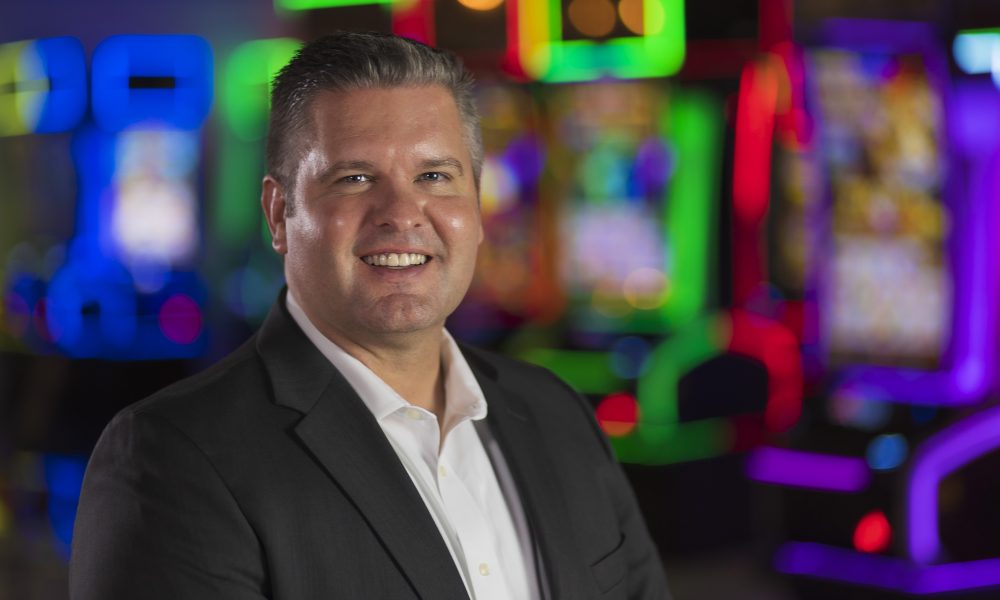Last month we had the opportunity to meet Keith Kruczynski, vice-president of studios North America for Ainsworth Game Technology, and learned how he parlayed a love for the theater and a talent for computer science into a decorated career in game development within the casino industry (read Part I here).
This time around, Kruczynski takes us on his journey from entry-level game producer and software engineer, to director of game development for Bally Technologies, to managing and producing games for IGT’s Evolve Studio, to vice-president of game development and design for Gaming Arts LLC, to his present executive position with Ainsworth.
Kruczynski’s love for video games when he was a child planted the seed for his career path. In fact, he revealed that the first question he asks a new hire candidate at an interview is “What is your favorite game of all time and why?”
“I always stipulate their game of choice can be anything, from tag, hide-and-seek, to board games, or of course video games,” he explained. “It is a great icebreaker and a way to hear them describe what they love about it, the graphics, the game play, whatever.”

Keith Kruczynski, vice-president of studios North America for Ainsworth Game Technology
Taking his affinity for games from the video entertainment realm to the casino world did pose its challenges for Kruczynski, who said that casino gaming is an exceptionally regulated industry, and because of this, the hardware tends to be three to five years behind whatever is the very latest technology.
“If you are playing Xbox, the game goes away and that is it,” he said. “If there is money on a slot machine and that game gets unplugged, the game has a memory to reveal exactly what state it was in, exactly how much money was on it, and exactly what happened the last 50 games.
“From an engineering standpoint, the player only sees about 20 to 30 percent of the work the engineers did. There is a lot ‘under the hood’ to make certain that all of the regulations have been satisfied.”
Kruczynski also encountered the reality that if a video gaming developer releases a great new processor, new graphics, or new ways of loading up the games, slot developers are forced to remain on hold because of the significant approval process that must take place.
Interacting with the team members in the Ainsworth studios, including mathematicians, engineers, project managers, and testers, is something Kruczynski enjoys best about his position.
“I love it,” he said. “I can be speaking with an extremely creative art type person, five minutes later interact with an extremely analytical person, and 10 minutes later discuss statistics with a mathematician because the math is a very significant part of what we do. The variety is so cool and makes every day different.”
Welcoming ideas from his Ainsworth colleagues is something else in which Kruczynski takes delight. Listening to concepts from everyone, including marketing, product management, the employees putting the games together on the manufacturing line. Mathematicians, artists, and engineers. It all makes a big difference in camaraderie and team spirit by keeping those creative juices flowing.
“I love that an idea can come from anybody,” Kruczynski said. “We can take an idea and bounce it off other people, ultimately deciding if it is something we should continue on with or perhaps deciding that it still needs some work.”
He firmly believes that “the people are the product”, observing “I have been in places where the art department does their thing, engineering does theirs, and so on. There is no cohesiveness, no ownership. When everyone from all different walks of life work in a studio you have all these different personalities, all different characteristics, that make the games 100 times better”.
Spending time on the “field of play”, and for Kruczynski that would be the casino floor, is very important to him. He believes that there is a big benefit to being out on the slot floor and watching people play the games, saying “I cannot stress enough how beneficial it is to watch how players are reacting and what they are gravitating towards”.
The phenomenon of ‘slot influencers’ and how their collective presence on social media outlets has expanded exponentially has wielded a tremendous impact on casino marketing strategies in recent years.
“They definitely have had an impact,” Kruczynski said. “It is great to see the younger generation getting involved with it and getting excited about it. What amazes me about influencers is that there are so many times we get a game out and we wonder if players will understand, will the players ‘get this’, will they see what we are trying to do here.
“Influencers have proven to us that the slot player is far more intelligent than we ever thought. It is really cool to watch them analyzing features and observing how one feature can happen more frequently than others.
“Once a month as a studio we will get 40 or 50 people on a call and select an influencer or select a game and see what they are doing, what they are playing, and what is really working out there on the slot floor.”
Analyzing feedback from slot players is something Ainsworth prefers to keep internal, according to Kruczynski, rather than rely on focus groups.
“Observing a focus group play your games from behind a one-way glass is challenging,” he says. “Often times the biggest feedback is that they wish the games would pay more. Targeting a group that we are trying to make the best products for are not necessarily the ones who will sit in a room for an hour and then give feedback on the game.”
The time it takes to bring a game from inception to fruition can vary according to Kruczynski, who said that some of the best games he has been a part of were six-month projects.
“It takes a lot of time to finish up and do all the testing,” he said. “I think on average, from conception to actual delivery time, the sweet spot is nine months. If you are looking at a license brand, a year and a half to two years is certainly not out of the question.”
Gazing into his crystal ball, Kruczynski sees there are still many innovations and concepts that will be developed moving forward, ensuring that he and his Ainsworth studio teams will be kept very busy.
“A lot of times what emerges isn’t ground-breaking or earth shattering,” he said. “It is just taking something that exists and looking at it in a different way. In the beginning slots were reel-spinning, then video slots, penny slots, multiple lines, free games, etc.
“There is also emerging technology that changes the industry. For example, the ‘hold and spin’ bonus feature or something we call the ‘wysiwyg’ factor (what you see is what you get) had that impact. The next big industry-changer will be ‘perceived persistence’ which has already been introduced.”
Heading up Ainsworth Game Technology’s North American studios as vice-president is a responsibility for which Keith Kruczynski is well prepared, thanks primarily for his expertise in the science side but also in great measure to the creativity and imagination his theatrical side brings to the table.





